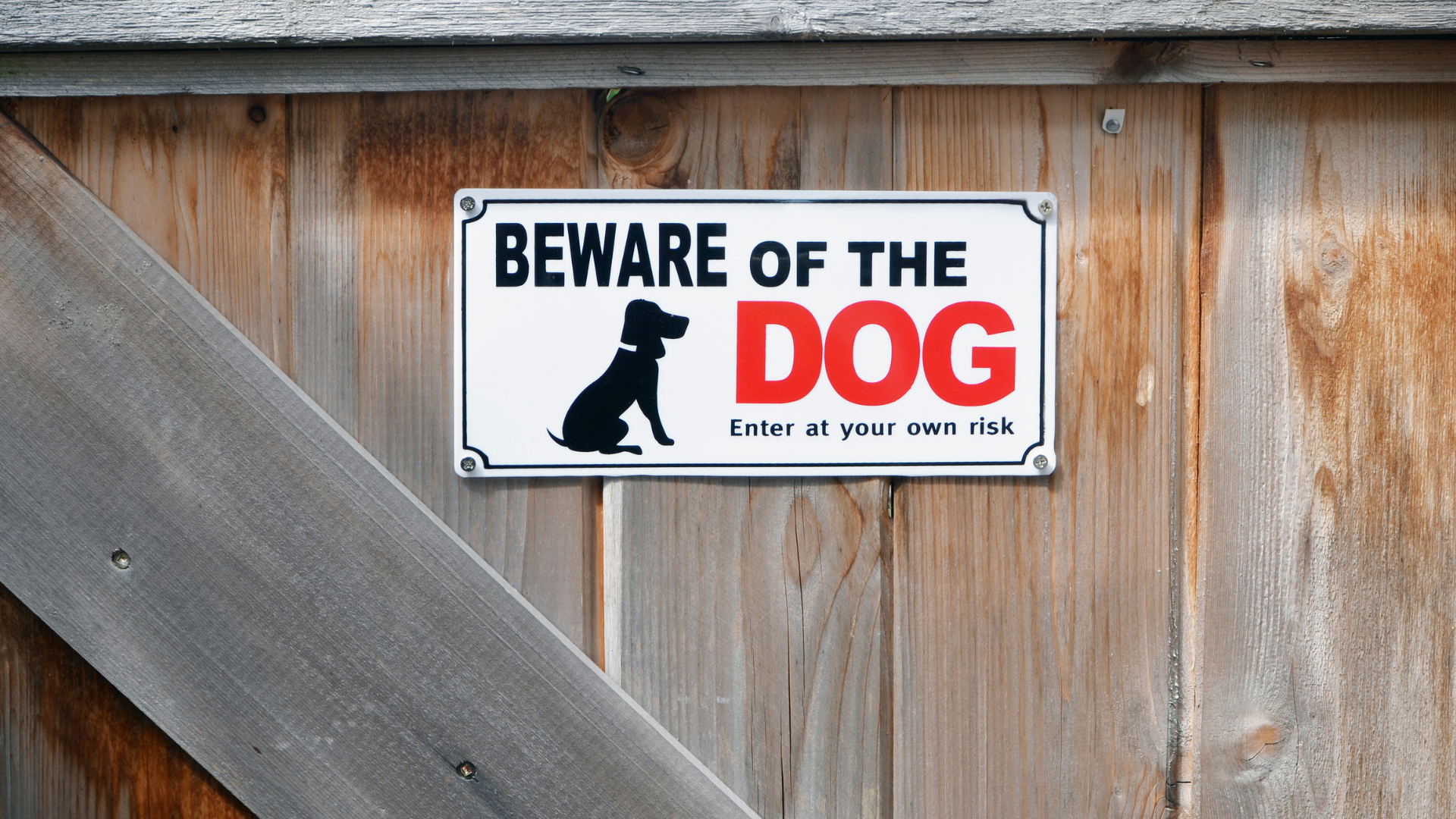In Short
Advice
Your furry friend is undoubtedly a beloved member of your family, but have you considered the potential consequences if your dog were to nip at or even attack a stranger? It's not just your neighbors who could be at risk, but also the postman, the pizza delivery person, or any other food delivery people who may come to your door. The last thing you want is for your dog to cause harm to someone else, which is why it's important to take proactive steps to prevent such incidents from occurring. In this blog post, we'll explore practical tips and strategies for keeping your dog from nipping at neighbors and strangers while also discussing legal action and responsibility in case of a dog bite or attack. Let's dive in.
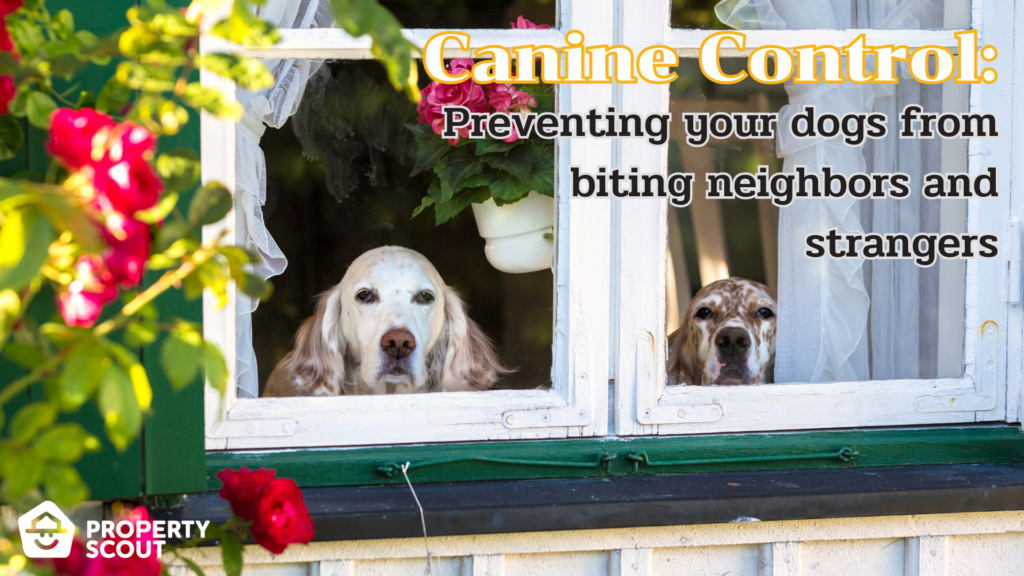
Understanding Canine Behavior
Before we can effectively prevent our dogs from nipping at neighbors and strangers, it's important to understand why dogs behave the way they do. As social animals, dogs communicate with us and others through body language and vocalizations, and understanding these signals can help us identify signs of aggression and prevent incidents from occurring. In this section, we'll delve into the reasons why dogs may bite, explore common signs of aggression to look out for, and discuss some practical preventive measures that can help keep your dog from nipping at neighbors and strangers.
Why dogs bite or attack strangers
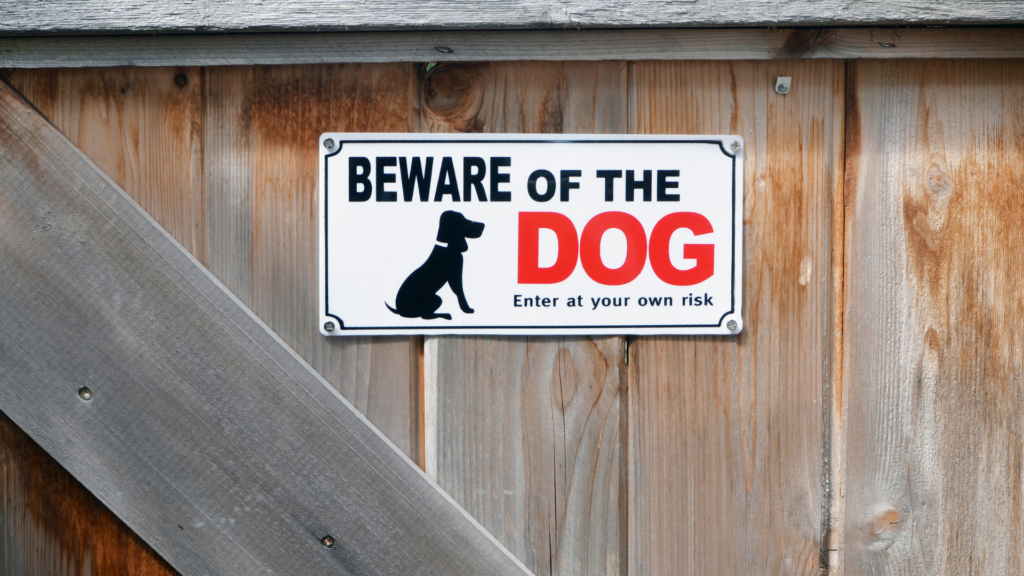
Dogs may bite or attack strangers for various reasons, including fear, territorial aggression, possessiveness, frustration, and pain. For example, a dog that is scared or feels threatened by a stranger may resort to biting as a form of self-defense. Similarly, a dog that is possessive of food, toys, or other resources may become aggressive towards strangers who try to take them away. In some cases, dogs may also exhibit aggression due to inadequate socialization or past traumatic experiences. Understanding why dogs bite or attack strangers is crucial for preventing such incidents from occurring and promoting safe interactions between dogs and humans.
Signs of aggression to look out for
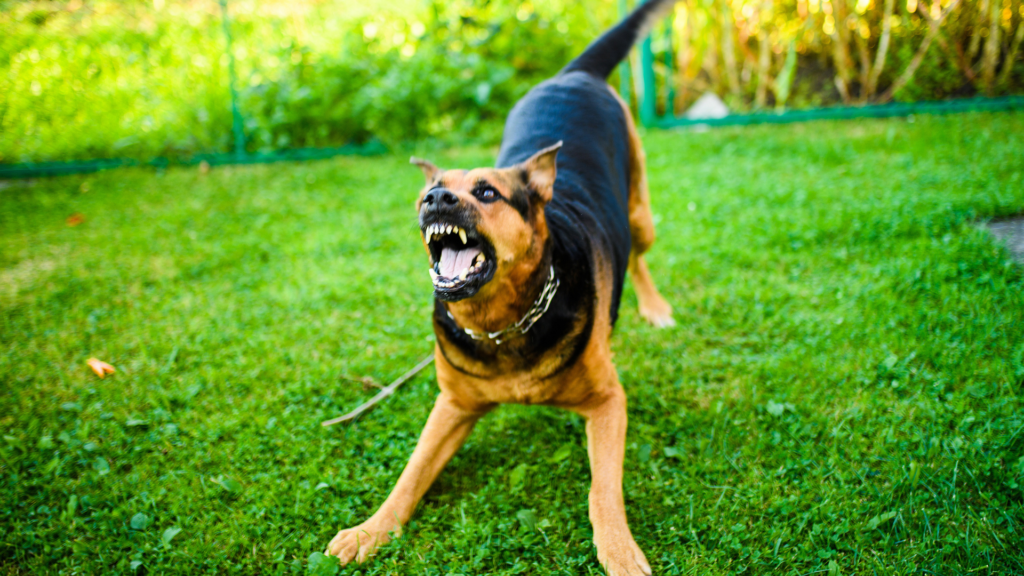
Signs of aggression in dogs may include growling, snarling, baring teeth, lunging, snapping, or biting. Other signs may be more subtle, such as stiff body posture, raised hackles, or a fixed stare. Dogs may also exhibit more generalized signs of anxiety or fear, such as trembling or panting. It's important to recognize these signs of aggression in order to take proactive steps to prevent incidents from occurring, as well as to ensure the safety of both your dog and others. If you notice any of these signs in your dog, it's important to take them seriously and seek the help of a professional trainer or behaviorist to address the underlying issues.
Preventive measures for common triggers
Preventive measures for common triggers of dog aggression may vary depending on the specific trigger, but some general strategies include socialization, positive reinforcement training, and managing your dog's environment. Socialization involves exposing your dog to a wide range of people, animals, and environments in a positive and controlled manner to help them become comfortable and confident in various situations. Positive reinforcement training involves rewarding your dog for desirable behaviors, such as remaining calm around strangers, and redirecting their attention away from potential triggers. Managing your dog's environment may involve controlling their access to strangers, avoiding high-risk situations, or securing your yard and home to prevent your dog from escaping. By implementing these preventive measures, you can help your dog learn to interact with strangers in a safe and positive manner while reducing the risk of aggression or biting.
Socialization and Training
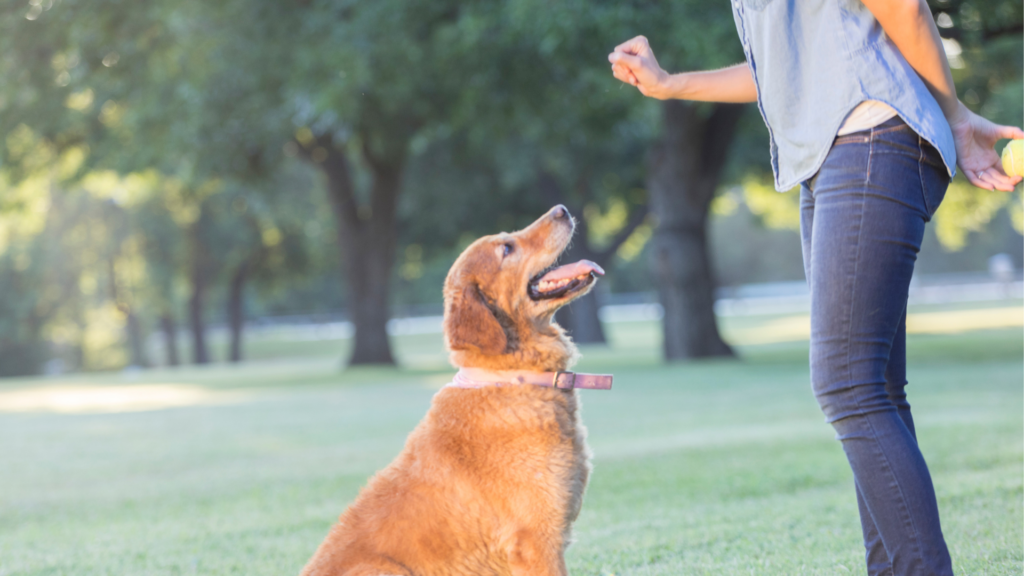
Socializing and training are essential for dogs to learn appropriate behaviors and interact safely with people and other animals. Socializing your dog from a young age helps them become accustomed to new experiences, people, and environments, which can help prevent fear and anxiety-related behaviors, including aggression. Training helps dogs learn basic commands and manners, as well as how to cope with stressful situations. Positive reinforcement training, which involves rewarding desired behaviors, has been shown to be effective in teaching dogs new skills and modifying their behavior. Proper socializing and training can help dogs lead happier, more fulfilling lives while also ensuring their safety and that of those around them.
Effective training methods for preventing aggression
Effective training methods for preventing aggression in dogs involve positive reinforcement techniques that reward good behavior and encourage calmness in potentially stressful situations. One approach is counter-conditioning, which involves exposing the dog to the trigger that causes aggression, such as strangers, while pairing it with a positive reward, such as treats or praise. This helps the dog associate the trigger with a positive experience, rather than a negative one. Another approach is desensitization, which involves gradually exposing the dog to the trigger at a low intensity and slowly increasing it over time. This helps the dog learn to remain calm in the presence of the trigger. It's important to use a professional trainer or behaviorist to ensure that training methods are safe and effective, and to tailor the approach to the individual dog's needs and personality. With patience and consistency, positive reinforcement training can help prevent aggression and ensure safe and positive interactions between dogs and people.
Socializing your dog with neighbors and delivery people
Socializing your dog with neighbors and delivery people is an important part of preventing aggression and promoting positive interactions between your dog and others. One approach is to gradually introduce your dog to new people in a controlled and positive way, such as through walks, playdates, or training classes. Encouraging your dog to engage in appropriate behaviors, such as sitting or staying calm around new people, and rewarding them with treats or praise can help reinforce positive associations. It's also important to provide clear rules and boundaries for interactions with strangers, such as not allowing your dog to jump on them or growl. By taking the time to socialize your dog with neighbors and delivery people, you can help your dog learn to remain calm and comfortable around new people, reducing the risk of aggression and promoting positive interactions.
Managing Your Dog's Environment
Managing your dog's environment is an essential aspect of responsible dog ownership, particularly when it comes to preventing aggression and promoting safety. By controlling your dog's access to strangers, avoiding high-risk situations, and securing your yard and home, you can reduce the risk of incidents and promote positive interactions between your dog and others. This approach can help prevent fear, anxiety, and other triggers that can lead to aggression or biting, while also ensuring your dog's safety and the safety of those around them. In this section, we'll explore some practical strategies for managing your dog's environment and promoting safe and positive interactions.
Controlling your dog's access to strangers
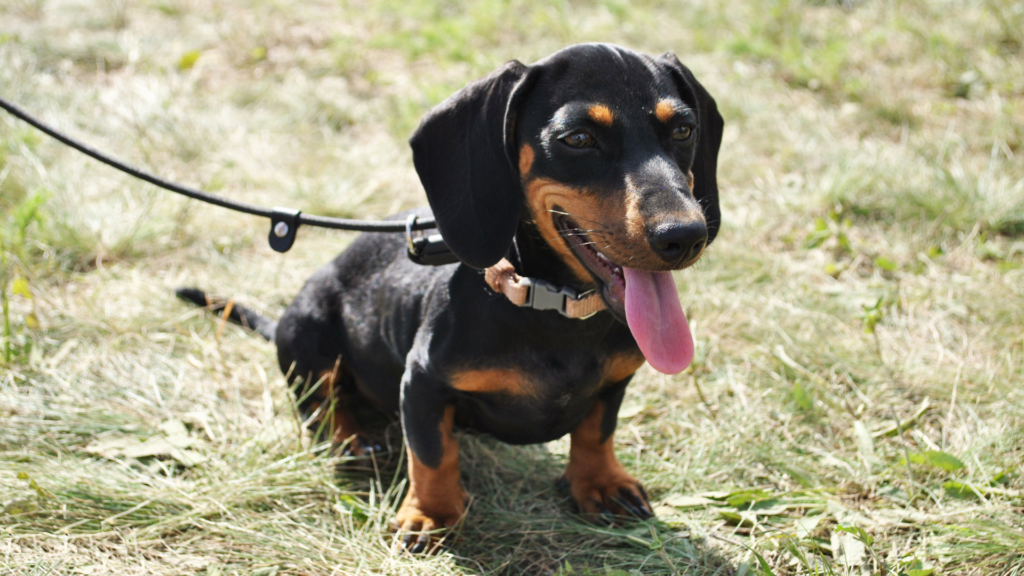
Controlling your dog's access to strangers is an important aspect of managing your dog's environment and preventing aggressive behavior. One approach is to keep your dog on a leash or in a crate when strangers are present, particularly if your dog has a history of aggression. This can help prevent your dog from approaching or engaging with strangers in an unpredictable or unsafe manner. You can also provide clear rules and boundaries for interactions with strangers, such as not allowing your dog to jump on them or growl. Additionally, it's important to supervise your dog when strangers are present and intervene if your dog shows signs of aggression or discomfort. By controlling your dog's access to strangers, you can help promote safe and positive interactions while also reducing the risk of incidents and promoting responsible dog ownership.
Avoiding high-risk situations
Avoiding high-risk situations is an important part of managing your dog's environment and preventing aggressive behavior. This involves identifying and avoiding situations that may trigger your dog's aggression, such as busy public areas, crowded events, or interactions with unfamiliar dogs or people. If you know your dog is prone to aggressive behavior in certain situations, it's important to plan ahead and take steps to avoid those situations. For example, if your dog becomes agitated around other dogs, you may choose to walk them in quieter areas or at times when fewer dogs are likely to be present. By avoiding high-risk situations and proactively managing your dog's environment, you can help prevent incidents and promote safe and positive interactions between your dog and others.
Securing your yard and home
Securing your yard and home is an important step in managing your dog's environment and preventing incidents of aggression or biting. This involves ensuring that your property is properly fenced or enclosed to prevent your dog from escaping or engaging with strangers. You may also consider using visual barriers, such as blinds or curtains, to prevent your dog from becoming overly aroused or agitated by external stimuli. Additionally, it's important to ensure that your dog cannot access potentially dangerous items or areas, such as pools, chemicals, or electrical equipment. By taking steps to secure your yard and home, you can help promote your dog's safety and prevent incidents of aggression or biting, while also promoting responsible dog ownership.
Legal Action and Responsibility

While it's important to take proactive measures to prevent incidents of aggression or biting from your dog, it's also important to understand the legal and social responsibilities that come with dog ownership. In the event that your dog does bite or attack someone, you may be held liable for any damages or injuries that occur. Additionally, there may be legal consequences, such as fines, penalties, or even criminal charges. In this section, we'll explore some of the legal and social responsibilities that come with dog ownership, as well as the potential consequences of failing to take these responsibilities seriously. We'll also discuss some steps you can take to protect yourself and your dog, and to promote responsible ownership and positive interactions with others.
In Thailand, dog owners are legally responsible for any harm or damage caused by their dogs. This includes bites or attacks on neighbors, delivery people, or other individuals. If your dog bites someone, you may be held liable for medical expenses, lost income, and other damages. Depending on the severity of the incident, you may also face criminal charges, fines, or penalties. To protect yourself and your dog, it's important to take proactive steps to prevent incidents of aggression or biting, such as training, socializing, and managing your dog's environment. If an incident does occur, it's important to cooperate with authorities and take responsibility for any damages or injuries that result. By promoting responsible ownership and positive interactions with others, you can help prevent incidents and promote a safe and harmonious community for everyone.
Consequences for the dog owner's Negligence
In Thailand, if your dog attacks a neighbor or a delivery person due to your negligence, it's considered a violation of article 377. This law states that failure to control a dangerous animal and allowing it to roam freely, putting people or property at risk, can lead to penalties. As a dog owner, it's important to be aware of this law and take responsibility for your pet's behavior. Neglecting to control your dog can result in up to 1 month in jail, a fine of up to 10,000 baht, or both.
Furthermore, according to the 2014 Animal Welfare Act, it is forbidden for pet owners to abandon, neglect, or release their animals without a valid reason. If an owner fails to comply with the guidelines set forth in Article 22, violates Article 23, or fails to follow proper care standards, they can face a fine of up to 40,000 baht and may be held responsible for any damages caused by their dog. Negligent pet owners who fail to properly care for their dogs and allow them to cause harm to people or property are committing a punishable offense. In the case of a dog bite due to neglectful care, the owner must provide compensation for the victim's damages.
Steps to take if your dog accidentally bites or attacks a stranger
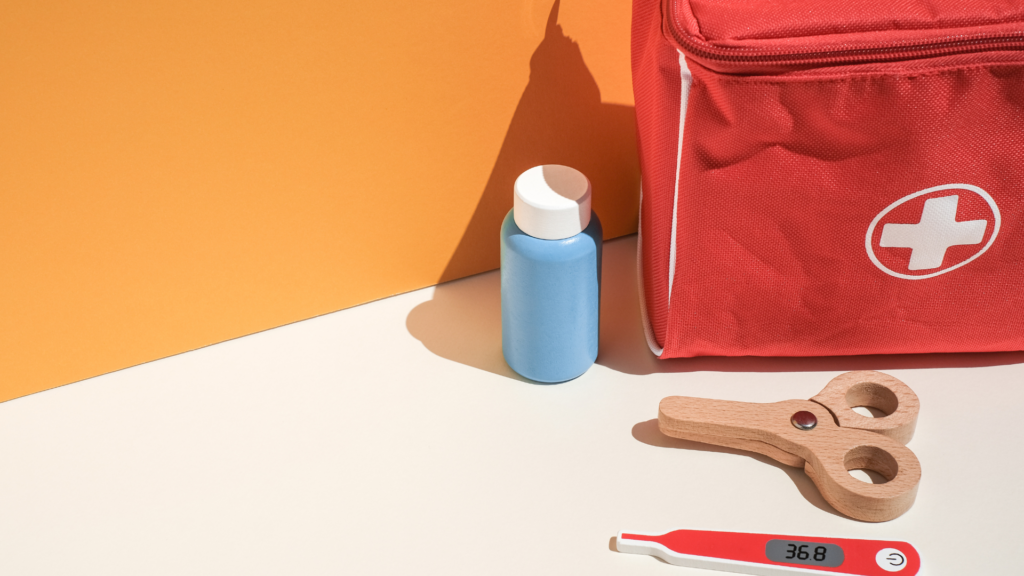
If your dog accidentally bites or attacks a stranger, the first thing to do is to ensure that the victim receives medical attention as soon as possible. Then, you should exchange contact information with the victim and provide them with your dog's vaccination records. If the victim requires medical treatment, you should offer to pay for their medical expenses. Additionally, it's important to notify local animal control authorities and follow their instructions regarding quarantine and observation of your dog to ensure that it does not have rabies and to prevent the spread of the disease. Finally, you may want to consider consulting with a professional dog trainer to address any behavioral issues that may have contributed to the incident to prevent future incidents.
Conclusion
In conclusion, being a responsible dog owner goes beyond just providing food and shelter for your furry friend. It means taking the necessary steps to prevent your dog from nipping at neighbors and strangers. By training your dog, supervising them, and keeping them on a leash, you can help ensure their safety as well as the safety of those around you. Remember, if your dog does accidentally bite someone, stay calm and take immediate action by seeking medical attention, reporting the incident to the authorities, and keeping an eye on your dog for any signs of rabies. By following these tips, you can help prevent incidents and keep your community safe.
Find your ideal property, available for sale or rent in the best prices possible, or list your property for sale or rent here. Alternatively, if you have any further questions, please get in touch with us:
FAQs
Lorem ipsum dolor sit amet, consectetur adipiscing elit. Suspendisse varius enim in eros elementum tristique.
Explore More Topics
Free real estate resources and tips on how to capitalise
